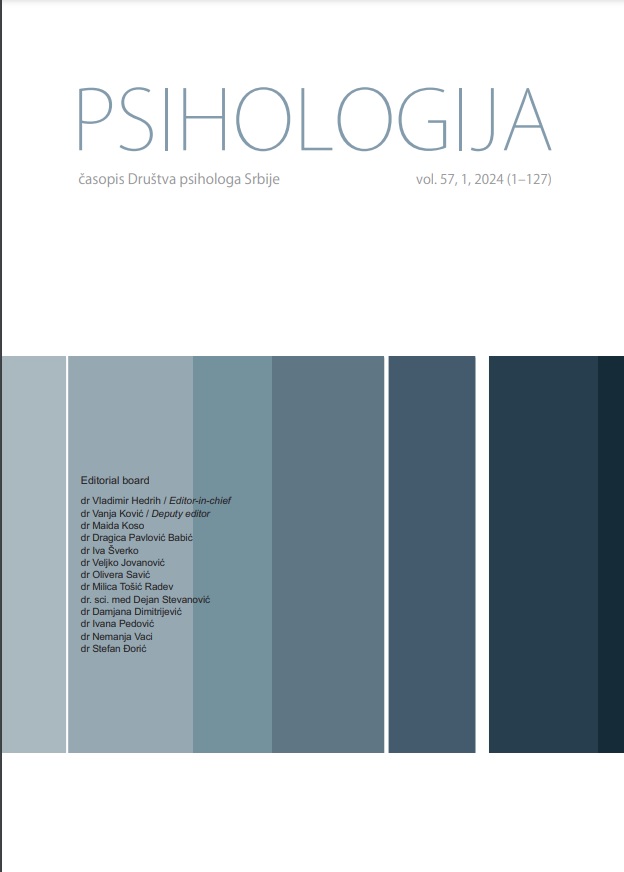The COVID-19 representation and implications for children's well-being: A three-way perspective
The COVID-19 representation and implications for children's well-being: A three-way perspective
Author(s): Alexandra Maftei, Maria-Mălina OlariuSubject(s): Developmental Psychology, Clinical psychology
Published by: Društvo psihologa Srbije
Keywords: COVID-19; children; teachers; parents; anxiety; well-being; future thinking
Summary/Abstract: The present research investigated the COVID-19 representation and its implications on children’s psychological health. We used multiple perspectives to explore this issue, i.e., children’s (N = 50, age range 8 − 10), parents’ (N = 100, age range 28 − 54), and teachers’ (N = 2, age 22 and 26) viewpoints, in a short longitudinal approach (Time 1 – November 2020, Time 2 – December 2020), during one of the most critical COVID-19 periods in Romania. We assumed similar patterns between parents’ and children’s representations of the COVID-19 pandemic, and our qualitative analyses confirmed this assumption. Next, our findings suggested that children’s higher levels of fear of COVID-19 correlated with higher anxiety levels at Time 1; meanwhile, at Time 2, children’s fear of COVID-19 significantly correlated with their well-being, which might indicate the potentially protective role of fear of COVID-19 through perceived threat. At Time 1, children’s self-reported measures of anxiety were significantly associated with parents’ and teachers’ perceived anxiety. At Time 2, teachers’ perceived anxiety concerning their students was not associated with children’s self-reported levels, as were their parents. Finally, at Time 1 (but not at Time 2), children’s fear of COVID-19 moderated the link between anxiety and children’s well-being. Results also suggested a partial mediating effect of parents’ fear of COVID-19 on the relationship between children’s fear of COVID-19 and well-being at Time 2, but not at Time 1. Finally, our results suggested that focusing on the future did not significantly impact children’s well-being, fear of COVID, or anxiety. However, children who wrote in their diaries focusing on present behaviors and emotions reported significantly higher anxiety levels at Time 2 compared to Time 1. We discuss our results concerning their practical implications in the 2020–2022 COVID-19 pandemic at personal, family, and educational levels.
Journal: Psihologija
- Issue Year: 57/2024
- Issue No: 1
- Page Range: 41-71
- Page Count: 31
- Language: English, Serbian

